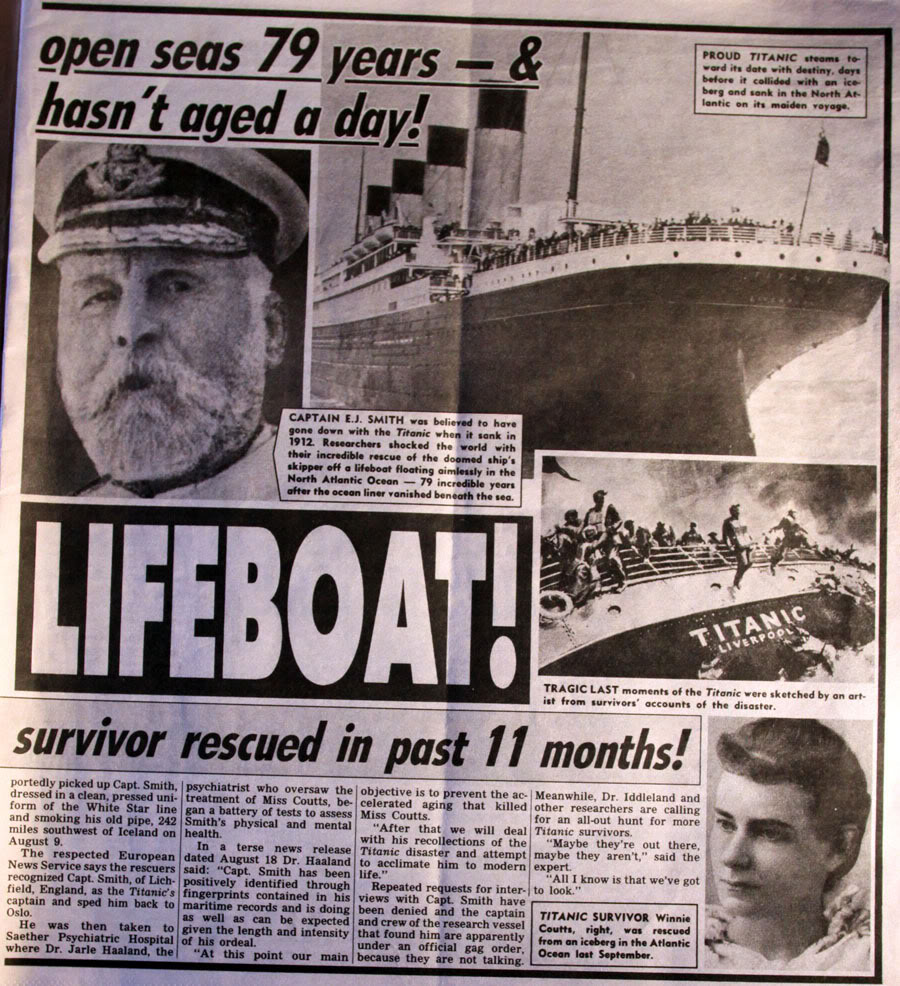
He saw Wilde and designer Thomas Andrews checking to make sure that the crew would close the watertight doors manually. Hart recalled that at some point during the day, there was a general bulkhead inspection. After the ship was put to sea, Wilde worked the 2–6 watches every morning and afternoon. Wilde stood by the anchor crane at the bow, his hands clasped behind his back, watching the crewmen kneeling on the deck next to him, coiling the lines neatly for storage. Around the time of departure, he was assisting Lightoller in casting off mooring ropes and in securing of tug lines.

Lightoller was a bit further aft on the Forecastle, working under Wilde's direction. The officers made their way to their departure stations Wilde was at the head of the forecastle, overseeing the crew working the mooring lines. Wilde was assembled with men for the ship's lifeboat drill. On the ship's sailing day, 10 April 1912, Wilde reported for duty at 6:00 a.m. Wilde is on the forecastle, just to the right of the anchor crane, with his hands clasped behind his back. Titanic at Southampton docks, prior to departure. Lightoller called Wilde "a pretty big, powerful chap, and he was a man that would not argue very long." Wilde did not formally join the ship until the evening of April 9. Wilde was ready and willing to serve, although he was a bit apprehensive about the switch to Titanic he had been hesitant to accept the appointment until his friends told him that he would be "mad to refuse" the opportunity, so he had accepted the posting.

Lightoller later recalled that Wilde had stayed ashore because he was to receive "command of another of the White Star steamers, which, owing to the coal strike and other reasons was laid up". Almost as soon as the ship had tied up in Southampton, Wilde had been kept ashore when the Olympic departed Southampton on April 3, and was assigned to make the Titanic voyage. Wilde was scheduled to leave Southampton on Olympic on 3 April 1912, but a reshuffle on board the Titanic caused the lowering of a rank of William McMaster Murdoch and Charles Lightoller to First and Second Officer, respectively, with Second Officer David Blair being removed from the ship entirely. Wilde was an officer of the Royal Naval Reserve, where he was commissioned a sub-lieutenant on 26 June 1902. An acquaintance would later say, that "he didn’t care particularly how he went or how soon he joined her." In August 1911, Wilde became Chief Officer of Titanic 's sister, the RMS Olympic, where he served under Titanic 's future captain, Edward J. He was left supporting four children and had some difficulty overcoming the loss. Tragedy struck in December 1910 when Wilde's wife and twin infant sons Archie and Richard died. He also saw service on White Star Line ships Republic, Coptic, Majestic, Baltic and Adriatic. These included the Covic, Cufic, Tauric, and Delphic. Starting as a junior officer, Wilde rose steadily through the ranks while serving on several White Star ships. In July 1897, he joined the White Star Line. Europa and served aboard her as second mate. Brunswick in 1895, where he served initially as third mate, then as second mate. His first steamship posting was aboard the S.S. From there, he served as third mate aboard the Greystoke Castle, and then moved on to third mate of the 1374-ton Hornsby Castle.

His apprenticeship began on 23 October 1889, on board the 1835-ton Greystoke Castle, and concluded four years later on 22 October 1893. Henry was known as Harry among his friends. Wilde was christened at the Loxley Congregational Chapel in Loxley, Sheffield on 24 October 1872. His mother was Elizabeth Tingle of Loxley, Bradfield. He was the son of Henry Wilde, an insurance surveyor from Ecclesfield, South Yorkshire. Henry Tingle Wilde was born on 21 September 1872 in Walton, north of Liverpool, England. He died when the ship sank on her maiden voyage.

Henry Tingle Wilde, RNR (21 September 1872 – 15 April 1912) was a British naval officer who was the chief officer of the RMS Titanic.


 0 kommentar(er)
0 kommentar(er)
